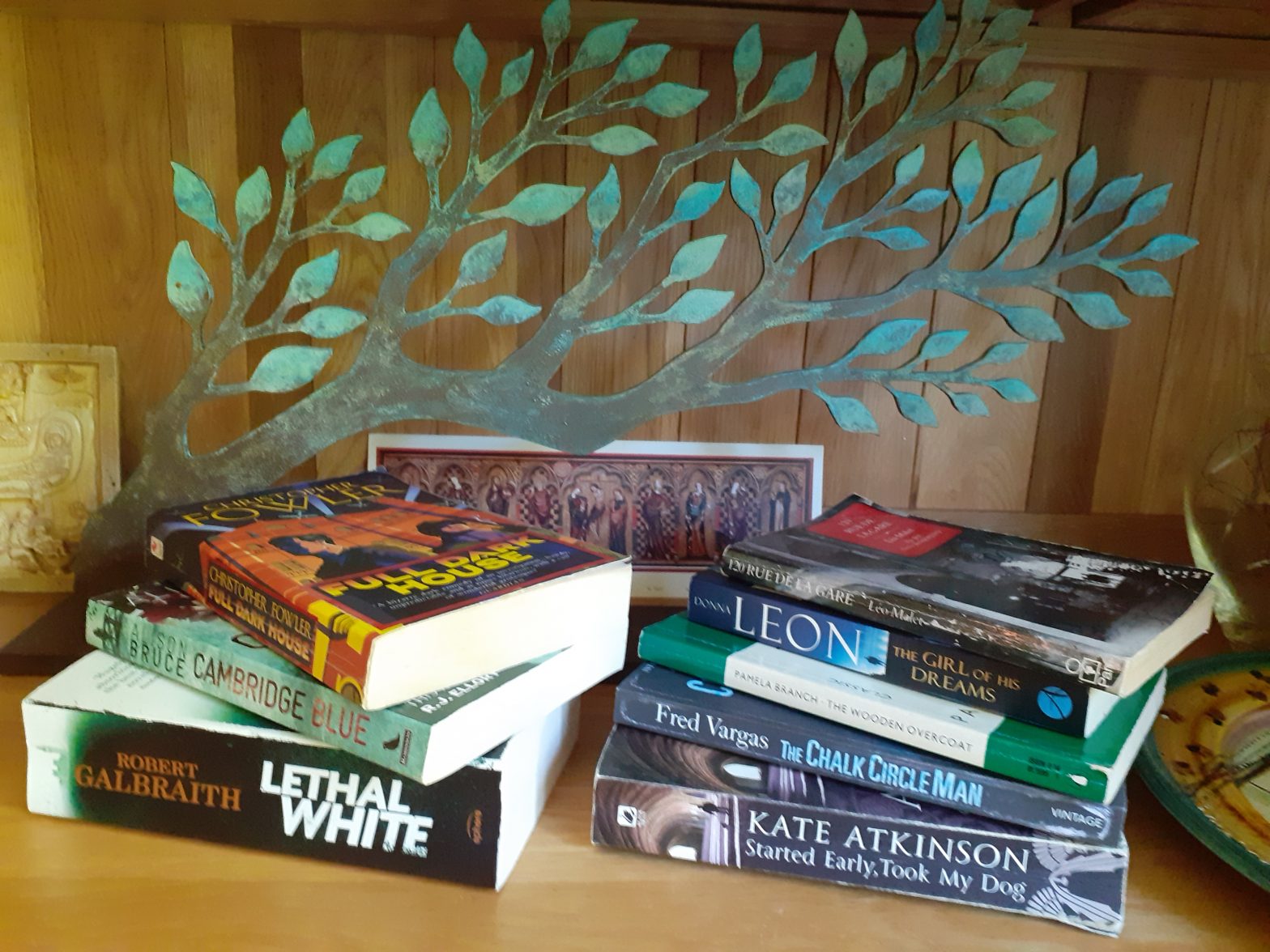Contributor: Rosalind Esche
‘Crime fiction confirms our belief, despite some evidence to the contrary, that we live in a rational, comprehensible, and moral universe.’ – P. D. James
For those who don’t read them, it would be tempting to think that those who do are sick people who enjoy indulging vicariously in violence. This may be true of some readers, but I would hazard a guess that for the vast majority the murder itself is secondary to the intricacies of the plot, the complexity of the puzzle, strong characterisation and an evocative setting. Of course we may enjoy a frisson of pleasurable fear at a safe distance, while curled up cosily at home with a book, safe in the knowledge that however frightening the story, it isn’t happening to us. Many argue that dark fairy tales serve the same purpose for children. The fact that there are so many crime novelists, and millions around the world reading them, demonstrates a universal need for what they provide.
When Alison Bruce, author of the Gary Goodhew detective novels, answered our Lockdown Reading questionnaire, she recommended The Science of Storytelling by Will Storr for both readers and writers. This book explores storytelling from a scientific point of view, looking at research from the realms of psychology and neuroscience to explain why we humans seem to be hard wired to need stories in order to function. Storr doesn’t share P.D. James’s belief in a moral universe, he thinks that the world is chaotic and our lives meaningless, and argues that our brains trick us into thinking otherwise through creating our own personal story, so that we can deceive ourselves that the world makes sense and that our lives have meaning. But he does agree with her on the fundamental point that we humans have a need to make sense of our experience, whether we believe in a world of nihilistic chaos or a moral universe, and that we do this through storytelling.
All of us are storytellers, constructing stories about ourselves and our experiences on a daily basis, but some people go one step further – they tell stories for a living. How extraordinary that we human beings not only turn our own personal experiences into a continuous narrative, but we need to hear/read/watch other people’s narratives, which we then relate back to our own circumstances and experience. So we buy books, go to the theatre, watch tv dramas and films. Even the songs we listen to are stories.
Whether or not we agree with Storr’s philosophical position, we can accept his analysis of the essential components of good storytelling, including unexpected change and information gaps, which create ‘gnawing levels of curiosity’ in readers. This applies to all storytelling, but for those of us who read crime fiction it rings particularly true. ‘The place of maximum curiosity – the zone in which storytellers play – is when people think they have some idea but aren’t quite sure’ he tells us.
Storr quotes Professor George Loewenstein who, in his paper The Psychology of Curiosity, based on psychological tests and brain scans, lists four ways of involuntarily inducing curiosity in humans:
- The ‘posing of a question or presentation of a puzzle’
- ‘exposure to a sequence of events with an anticipated but unknown resolution’
- ‘the violation of expectations that triggers a search for an explanation’
- knowledge of ‘possession of information by someone else’
Storr points out that readers of detective fiction will immediately recognise the familiar components of the detective novel in which the reader is:
- ‘posed a puzzle’
- ‘exposed to a sequence of events with an anticipated but unknown resolution’
- ‘surprised by red herrings’
- ‘tantalised by the fact that someone knows whodunnit, and how, but we don’t.’
and admits that ‘Storytellers have long known these principles, having discovered them by practice and instinct.’ He goes on to remark that ‘Without realising it, deep in the detail of his dry, academic paper, Loewenstein has written a perfect description of police-procedural drama.’
However, as we readers know, police procedure without well drawn characters is ultimately limited, satisfying in the way that completing a crossword puzzle is satisfying, but lacking emotional depth and of no lasting impact. While the mystery at the heart of a detective story compels our immediate attention, there is no doubt that the detective’s relationships, be they romantic, familial or working, are an essential weapon in the author’s armoury for sustaining our interest, particularly in crime fiction series, in which we can follow personal storylines as they develop in each succeeding book. We gradually get to know John Rebus, Cormoran Strike, Roy Grace, Harry Nelson, as their personal stories unfold within the framework of each successive plot, returning to them like old friends with each new book.
In the end, for me, it’s simple psychology – detective fiction deals with light versus dark, good versus evil, it provides the feeling of security that comes from a puzzle solved, loose ends tied up, bad people getting their comeuppance and order and safety being restored. On top of all that you get interesting characters and as often as not some humour thrown in. The crime novel provides a framework within which the author can explore human nature, morality, psychology, social issues, human relationships and more besides. As Ian Rankin said “I discovered that everything I wanted to say about the world could be said in a crime novel.”
